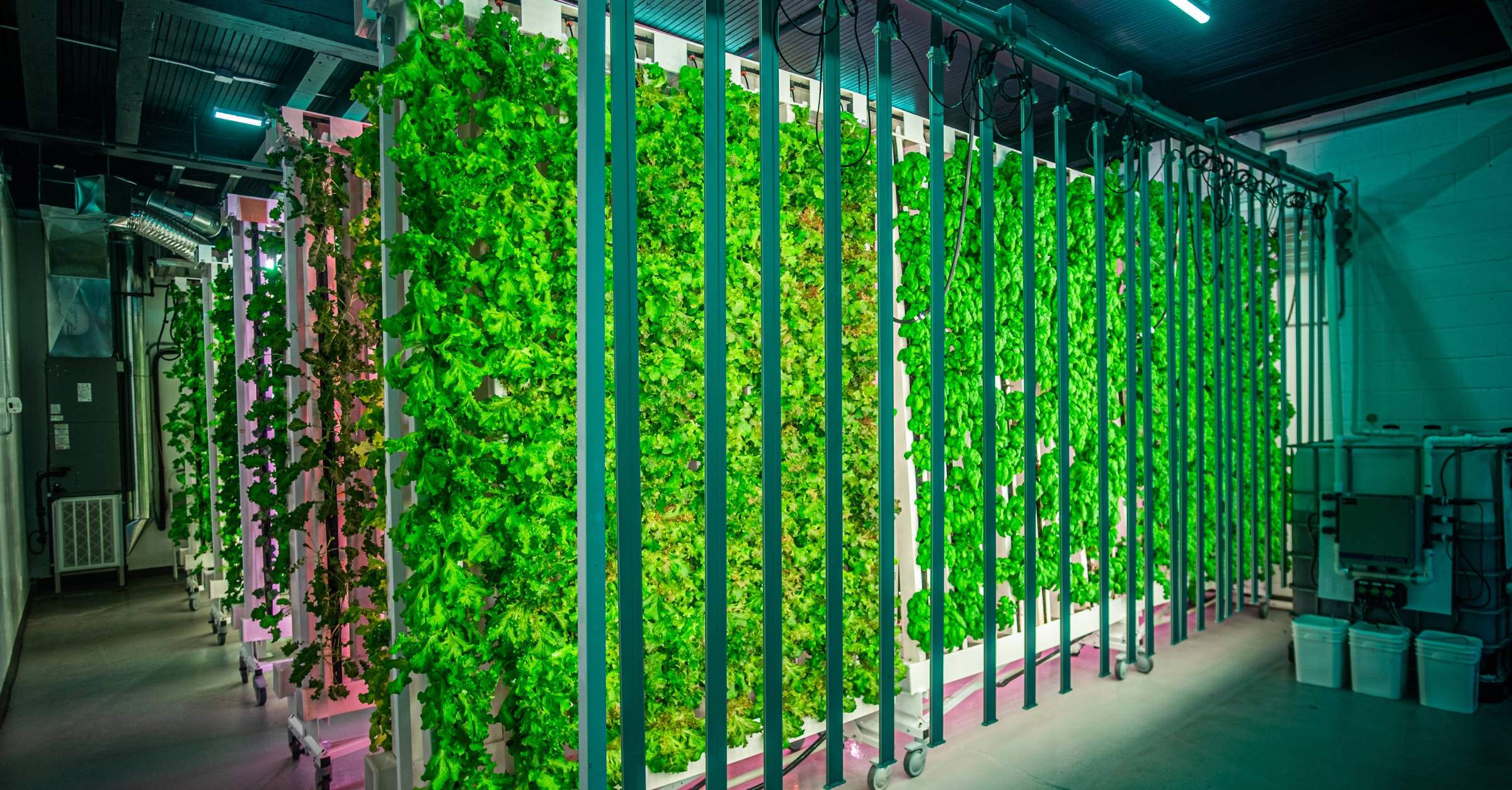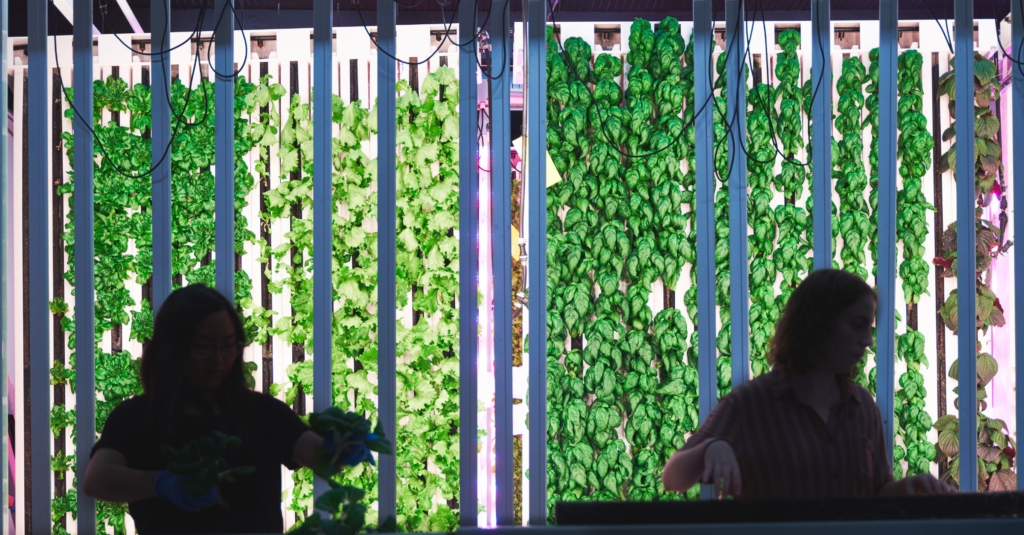
Vertical farm reuses leafy greens production waste to grow specialty mushrooms
By Lilian Schaer for Bioenterprise Canada
It was a chance conversation with his brother four years ago that set Jason Wolfe, a long-time teacher and administrator, on a career path he never imagined – vertical farmer.
In 2019, Wolfe had just ended a lengthy career in education following the unexpected closure of the private school he’d been working at for 10 years when his brother Ryan, who owned three restaurants in downtown Halifax, suggested he turn an old barn building on his property into a vertical farm.
“I went home that night, looked up what a vertical farm and I was captivated. I was very lost when the school had closed, and this sparked something within me,” Wolfe recalls.
He was accepted into a self-employment program offered by the Centre for Entrepreneurship Education and Development (CEED) in Halifax to support and help write his first business plan. This started him on a three-and-a-half-year journey of finding partners, investors, and funders – and in February 2023, he finally planted the first crop in his new vertical farm.
The original concept for Urban Lighthouse Farm was focused around growing culinary herbs, greens and mixes commonly used in restaurants, but when the COVID-19 pandemic shut down the food service industry, Wolfe became interested in food security issues.
“Nova Scotia is a good example of how different Canadian regions can be food insecure. During the height of the pandemic, there were many times our grocery stores had empty shelves due to a breakdown in the cold supply chain or farmers not finding workers, for example,” he says. “A big focus now is how we can play a role in strengthening our agricultural system forward, and although I do not think vertical farming can replace field farming, I do believe it has a role to play and that’s what we’re exploring now.”
Urban Lighthouse Farm currently grows greens and herbs in about 2,500 square feet of space, with production focused on three main products: Genovese Basil, an Arugula mix and a spring greens mix. Currently, his produce goes to small independent farm markets, independent grocery stores, and restaurants in the Halifax area, and he’s having ongoing exploratory meetings with bigger distributors in the region.
An additional 150 square feet in his facility dedicated to a new passion project that has just come online: growing speciality mushrooms in the substrate left over from his herbs and greens production. According to Wolfe, one of the big problems for vertical farming is that it cannot replace the farming of calorie dense or protein rich plants.
“I wanted to look at this problem and see if there was a way to increase the number of calories produced in a vertical farm in a cost-effective way. Specialty mushrooms are an excellent source of complete protein and provides a wide range of health benefits. At the same time, speciality mushrooms don’t transport well and are expensive to buy,” he says. “Our unique process has wide reached benefits – it is a way to make a dent in the food waste we have from our greens and herb production and a way to explore mushrooms as a good, viable protein source that is readily available and inexpensive.”
An introduction to Katrin Sommerfeld at Acadia University’s Office of Industry & Community Engagement connected him with researchers at both Acadia University and Saint Mary’s University to explore and validate his two-phase cropping system approach for leafy greens and mushrooms.
Their research showed that he could successfully grow greens in coconut coir and reuse the spent substrate to grow the mushroom crop. The team at Acadia has also designed a special basket using loose coconut coir to suit Wolfe’s commercial set up so he doesn’t have to re-tool to use the more commonly available coir plugs.

“We are in our infancy of developing this innovative process, and a second round of trials at Acadia will confirm whether it is deployable into larger commercial settings,” he says, adding he’s looking into manufacturers who could mass produce the baskets to use in his commercial farm where he plants 2,500 to 3,000 seedlings a week.
He’s received financial support from the National Research Council of Canada’s Industrial Research Assistance Program (NRC IRAP) and Invest Nova Scotia for his research; Springboard Atlantic has also been a big supporter.
Long-term, his vision is to create a network of smaller vertical farms across Atlantic Canada that can share resources, maximize transportation logistics and support both local job creation and regional food security.
“We want this unique system of using the waste to grow mushrooms to be a blueprint for other farms,” he says. “I see this process being deployable across regions and want to see the creation of additional revenue streams and for reusing waste to become standard in vertical farms.”
-30-